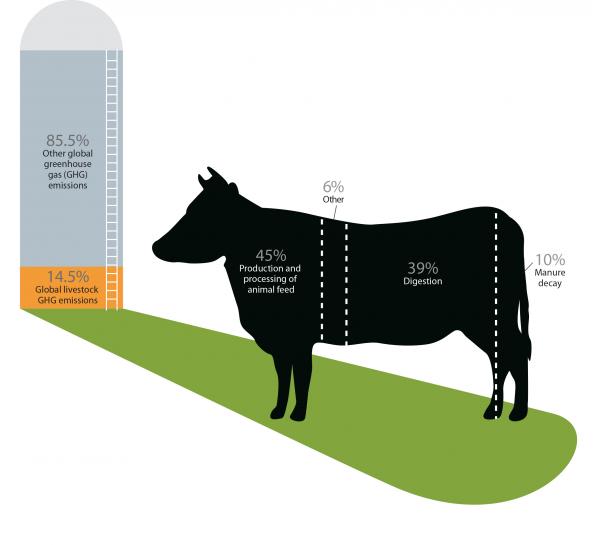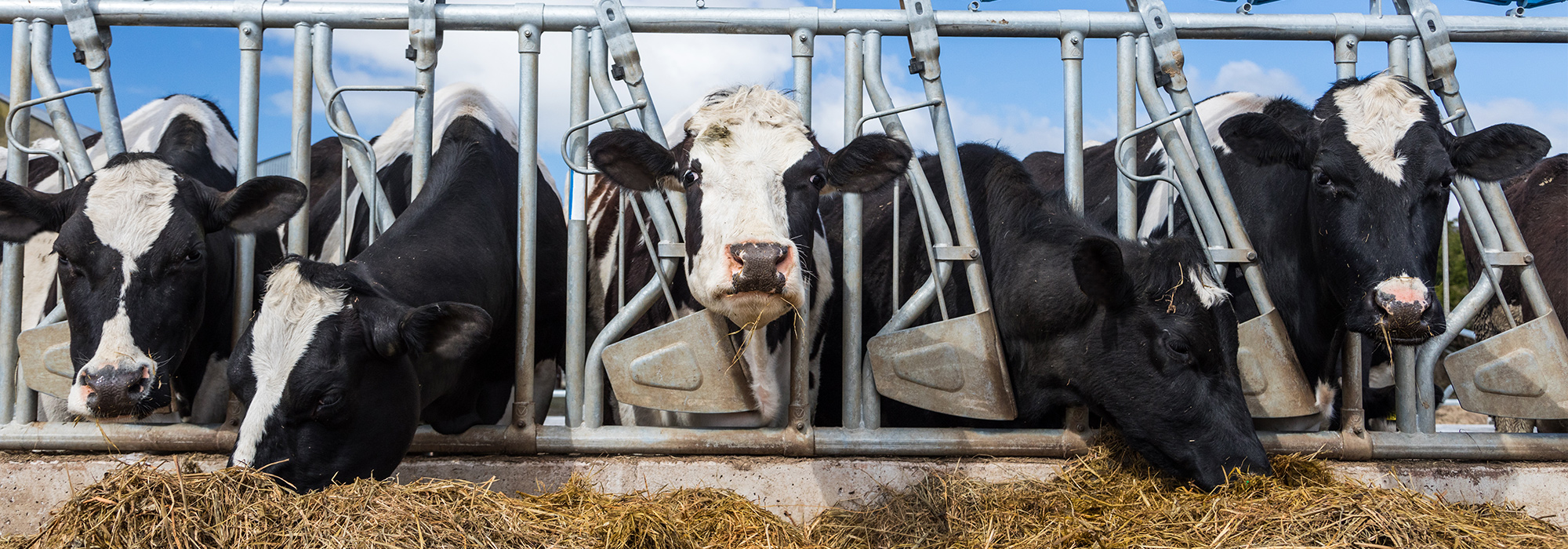
Cows and sheep have always shouldered a chunk of the blame for rising greenhouse gas emissions, with extensive scientific evidence showing that the livestock production chain is responsible for a significant carbon hoofprint. Now, the United Nations Food and Agriculture Organization (FAO) has issued a new report updating its assessment of livestock’s share of greenhouse gas emissions — it is smaller than the FAO once believed — and offering an encouraging prognosis for reductions that would make a significant contribution to mitigating climate change.
The FAO’s Tackling Climate Change through Livestock sees the prospect of cutting emissions in the livestock sector by 30 percent through the adoption of existing best practices and technologies. Crucially, the report argues that these reductions can be made without an overhaul of existing production systems. The focus, it states, should be on such practical measures as using higher quality feed and improving breeding and animal health. Most of the reductions could be achieved in the developing world, where the emission intensity per unit of animal protein and per unit of land used are high.
But the FAO also sees opportunities for cutbacks in developed agricultural economies, which have a greater capacity to adopt mitigation strategies. In contrast to regions where agriculture is largely for subsistence, the massive volume of production from industrial farming in developed countries means that even small declines in emission intensity can create significant reductions in greenhouse gas emissions.
“It is absolutely possible to have fairly large cuts in emissions from livestock farming across Canada,” says Paul Thomassin, professor of agricultural economics at McGill University. “The big question is, what are the incentives for farmers to adopt these practices?”
The FAO estimates that the global livestock sector accounts for as much as 7.1 gigatonnes of CO2-equivalent every year, representing 14.5 percent of all human-related greenhouse gas (GHG) emissions. (Its 2006 report, Livestock’s Long Shadow, put the share of all human-related gases at 18 percent, a level, as the FAO famously put it, higher than that of planes, trains and automobiles combined.) It found emissions to be concentrated in three stages: production and processing of animal feed (45 percent of total emissions), digestion by cattle (39 percent) and manure decay (10 percent). Estimating emissions levels through this life-cycle approach allows for more targeted mitigation strategies. “By drilling down into where and how emissions occur, the report reveals that significant emissions reductions are within the reach of livestock producers,” the report says.
The result is a series of prescriptions ranging from better feeding practices and herd structure to improved manure and land management. The FAO points to Latin America, East Africa and South Asia as regions where the potential cuts are particularly strong. For developing countries in which livestock represents an increasingly important source of income and protein, this increased production through more efficient use of energy could also mean improved living standards for farmers and enhanced food security in regions suffering from chronic hunger and malnourishment.

Substantial reductions in emissions are also possible in the more developed regions of the world. In contrast to parts of the world where agriculture is largely done for subsistence, in economically advanced countries the sheer volume of production from industrial farming means that even small declines in emission intensity can create significant reductions in GHG emissions.
Of particular relevance to Canada is the FAO’s analysis of dairy farming across advanced industrial countries in the Organisation for Economic Co-Operation and Development (OECD). Due to more efficient energy practices and production techniques, the average emission intensity for dairy farming in OECD countries is already lower than the world average. Nevertheless, the FAO identifies three principal interventions that could significantly reduce GHG emissions in the industrial dairy farming industry:
- The use of a dietary lipid supplementation, like linseed and cottonseed oils, in the feeding of lactating cows would reduce the amount of methane produced by the animal’s digestive process. Methane is a significant contributor to GHG emissions, with some estimates putting its global warming potential at 20 times or more than that of carbon dioxide.
- Improving manure management through the wider use of anaerobic bacteria in waste towers would also reduce methane emissions and contribute to the production of biogas, a renewable alternative to fossil fuels. Gains from waste management are especially significant in the North American context because high-emitting manure lagoons are more widely used throughout Canada and the US than in other OECD countries.
- Adopting technologies used by the most energy-efficient farmers in feed production, farm and post-farm activities would have a significant impact on emissions from dairy farming throughout the OECD.
By focusing policy attention on these three areas of dairy production, the FAO estimates that emissions could be slashed by 14 to 17 percent in the livestock sectors throughout OECD countries, and by as much as 25 to 28 percent in North America.
The major question addressed in the report is how to get the farming sector to adopt these practices. In the developing world, it says, the key to getting farmers to buy into mitigation strategies is to show how they would contribute to greater food security and higher incomes. For developed countries, solutions lie in crafting a credible policy framework that helps the industry operate more efficiently.
Thomassin points to provincial carbon-credit policies as being instrumental to creating the incentive structures which will lead to more energy-efficient farming practices. He cites Alberta as a province with policies, such as a regulated carbon market, that are particularly conducive to pushing more efficient methods and technologies. And its “Four R Program” encourages better fertilizer management through using the right fertilizer, in the right place, in the right amount and at the right time. Other provinces are also looking at the sector. Quebec, for example, has also adopted a cap-and-trade program that will allow farms to sell carbon offsets into its carbon market. Among the offsets is a protocol for covering manure storage facilities.
Thomassin stresses that the FAO’s recommendations “depend on the economic incentives for the adoption of more environmental efficient management practices.” Perhaps with that in mind, the FAO also adopted a softer tone than it did in its 2006 report, which was embraced by critics of the high meat consumption culture and drew a backlash from a farming sector that felt targeted for blame over climate change. The latest report appears to be trying to defuse that conflict, offering a more palatable approach that argues lowering GHG emissions is possible without changing the very nature of farming, or turning us into a planet of vegans.
Photo: Shutterstock by gabriel12






